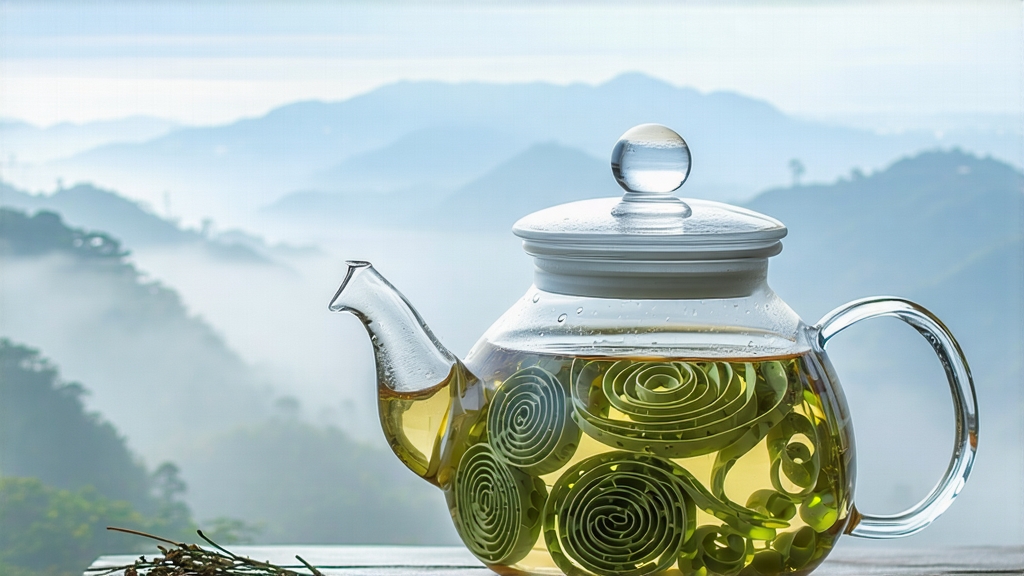
Biluochun, whose name translates literally to “Green Snail Spring,” is one of China’s ten most celebrated teas, yet it remains a quiet legend outside Asia. Grown on the mist-locked islands of Dongting Mountain in Taihu Lake, Jiangsu Province, this micro-lot green tea is prized for its improbably tight spiral, downy white tips, and a fragrance so intense that poets once accused it of “stealing the scent of peach blossoms.” To understand Biluochun is to step into a 1,200-year-old story that intertwines imperial whim, horticultural serendipity, and the delicate alchemy of early-spring sunlight.
Historical whispers place the tea’s birth during the Tang dynasty, when local monks first fired wild tea leaves in small woks to stop oxidation. By the late Song, the leaves were already rolled into tiny coils that resembled sea-snail shells, hence the early nickname “Xia Sha Ren Xiang” (“Scary Fragrance”)—so aromatic that courtesans feared it would betray their presence. The Kangxi Emperor, touring the south in 1699, rechristened it “Biluochun” after its jade color and snail-like curl, elevating it to tribute status. For three centuries, every spring, the finest kilogram was couriered to the Forbidden City packed in sealed bamboo tubes lined with lotus leaves.
Geography is the first secret. Dongting Mountain is actually two islands—Dongshan and Xishan—rising from a shallow, mineral-rich lake whose microclimate mimics a natural greenhouse. Morning mist refracts light, slowing photosynthesis and concentrating amino acids; cool nights lock in volatile floral compounds. The soil is a loose, acidic granite loam strewn with crushed shell fossils, lending a subtle marine sweetness to the leaf. Unlike the terraced gardens of Zhejiang or Yunnan, Biluochun bushes are interplanted with fruit trees—peach, plum, apricot—whose blossoms fall like snow, scenting the soil and encouraging bees that carry yeasts responsible for the tea’s signature honeysuckle note.
The cultivar itself is a localized clone of the small-leaf Camellia sinensis var. sinensis, selected over centuries for tiny, pliant buds that can withstand the violent rolling required to achieve the classic spiral. Farmers call the ideal pick “one flag, one spear”: a single unfurled leaf embracing the downy bud, no longer than 2.5 cm, harvested between Qingming and Grain Rain when the spring sun is mild and the leaf’s cell walls are still translucent.
Crafting Biluochun is a race against time. Picking begins at 5 a.m., when dew still weighs down the leaf, preventing bruising. Baskets are woven from water-cane to stay cool; leaves must reach the village workshop within two hours. There, withered briefly on bamboo trays for no more than 30 minutes, they lose surface moisture while retaining internal juiciness. The kill-green step is performed in woks heated to precisely 180 °C; a master fryer tosses 250 g at a time, using only the fingertips to press and flip, stopping oxidation within 90 seconds. The leaf emerges limp and jade-bright, exhaling a cloud of hot spinach and grilled chestnut.
Rolling is where the magic curl forms. Traditionally done on low, slatted bamboo tables, the still-warm leaves are kneaded under palm pressure for 15 minutes, coaxed into a spiral so tight it can sit upright on a fingertip. Temperature is critical: too cool and the coil loosens; too hot and the down burns off. A second, gentler firing at 70 °C for 40 minutes reduces moisture to 6 %, locking in fragrance while preserving the silvery trichomes that give the brew its velvety mouthfeel. The entire process, from mountain to tin, finishes before sunset.
Grading follows an unofficial but rigid village code: Supreme Grade (Qingming pick, 6,000 buds per 100 g), Grade One (pre-Grain Rain, 4,500 buds), and Grade Two (late spring, 3,000 buds). Supreme coils are the size of housefly wings, silvery green, and sink vertically when dropped into water, releasing a vertical “dance” that connoisseurs call “the standing needle.”
To brew Biluochun properly is to court subtlety. Use a tall, clear glass—never porcelain—so the spiral can unfurl like a time-lapse fern. Heat spring water